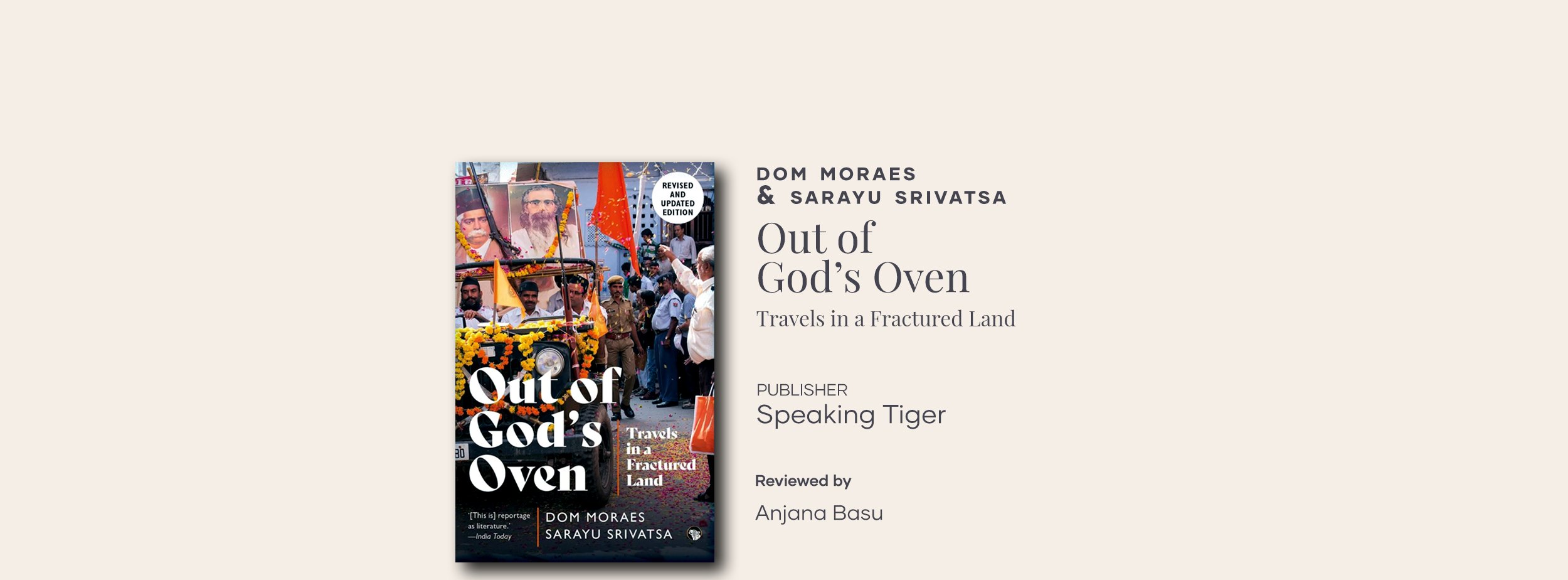
This book first came out in 2002. Given the scenario in the Indian subcontinent, Speaking Tiger decided that there was no time like the present to bring out a new version of the book with an updated introduction by Sarayu Srivatsa who co-authored the book with the late Dom Moraes. It was as Dom said, a collaboration between an outsider and an insider. Srivatsa came from traditional Brahman family so was very much an insider.
The title of the book, in fact, comes from a story told to Srivatsa by her grandmother, which she reveals in her 2023 introduction. God created the human race from clay and baked them in a kiln. The ones perfectly baked were Brahmans, while the lesser castes were burnt and blackened. ‘During our travels for this book between 1996 and 2001, Dom and I met a large variety of people and everywhere we found evidence of a deeply divided society, a society where modernity did not extend to civic life, to interpersonal relationships,’ Srivatsa writes, adding that nothing much has changed even in the third decade of the 21st century, with the country still being guided by old-fashioned ideas of ‘purity’ and righteousness. ‘The only difference is that bigotry and communal hate, which earlier lived in the shadows, has now been legitimised and is displayed proudly and viciously,’ Srivatsa adds.
Spanning 450 pages, the book has eight chapters, four written by Moraes and four by Srivatsa. Each chapter covers various encounters as the authors travel across a ‘fractured land’. In one sense it can be called a travel book but it is also a socio political account of happenings across India with commentaries or the lack of then depending on who wrote the piece in question.
The fact that it is well written is only to be expected – Moraes’ internationally-acclaimed work needs no introduction. His style balances Srivatsa’s since he writes as someone who does not consider himself to be Indian and looks at the country and its people from the perspective of an Anglo Indian, brown outside and white inside. He writes of the three India’s he discovered - ‘One was found in the cities and I disliked it. One was quite separate, found in the villages. I pitied it and wanted to love it, but it puzzled me. The third India no longer existed and perhaps never had, but might have been beautiful if and when it did. But I still didn’t feel I belonged to any of them…’
Srivatsa is more rooted in her approach and easier to relate to because she seems to understand the people she writes about and therefore her approach is more immersive, more ‘humane’. Moraes, on the other hand, tends to reduce people to caricatures, seeing them from his own preconceived notions of anti-Indianness. He says very clearly that disliked all the urbanised Indians that he met because of their inflated ideas of India and their obsession with money and success – which to be fair, has some amount of truth to it.
Between them, the two authors spoke to a wide variety of people, ranging from godmen to politicians and bureaucrats and including artists, poets, publishers, filmmakers, and more. In all a very comprehensive list of people who would be informed about the state of the different Indias and the fractured politics of caste and religion affecting it. The narratives discovered by authors within the diverse facets of India, sweep from the temple-town of Thanjavur to the grim echoes of 2002 in Ahmedabad, from the expansive, tree-lined streets of Delhi to the sand, sea and humidity of coastal Mumbai and from the cultured café fraternity of Calcutta to cities like Patna, Bhopal, Chandigarh, and Chennai. Occasionally the encounters and the stories are not equally profound – in some cases rather ordinary – but one would expect that because to keep the level even would require a lot more delving. However, both writers hold the interest and maintain the pace of their narrative and From God’s Oven reinforces its importance in the new narrative of 21st Century India.
